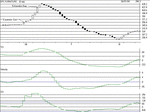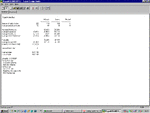Both these sites give a full explanation of island reversals.
http://www.asianinvestoronline.com/trading101/1day_reversals.asp
http://www.wiu.edu/users/miag/facstaff/tpd/tutorbc.htm
More important tho is "do they work?"
I have a simple routine written into AIQ which identifies islands, and then I can back test whether trading them would be profitable. They tend to be more reliable if they occur after a selling climax, or close to support or resistance, or close to a fibonacci level.
I have "pulled" the table that some of you may have read earlier - I discovered some inconsistencies in the results and don't want to mislead anyone with over optimistic results. Will post it again when I have checked it out and i have a table which stand up to close scrutiny.
http://www.asianinvestoronline.com/trading101/1day_reversals.asp
http://www.wiu.edu/users/miag/facstaff/tpd/tutorbc.htm
More important tho is "do they work?"
I have a simple routine written into AIQ which identifies islands, and then I can back test whether trading them would be profitable. They tend to be more reliable if they occur after a selling climax, or close to support or resistance, or close to a fibonacci level.
I have "pulled" the table that some of you may have read earlier - I discovered some inconsistencies in the results and don't want to mislead anyone with over optimistic results. Will post it again when I have checked it out and i have a table which stand up to close scrutiny.
Last edited:


